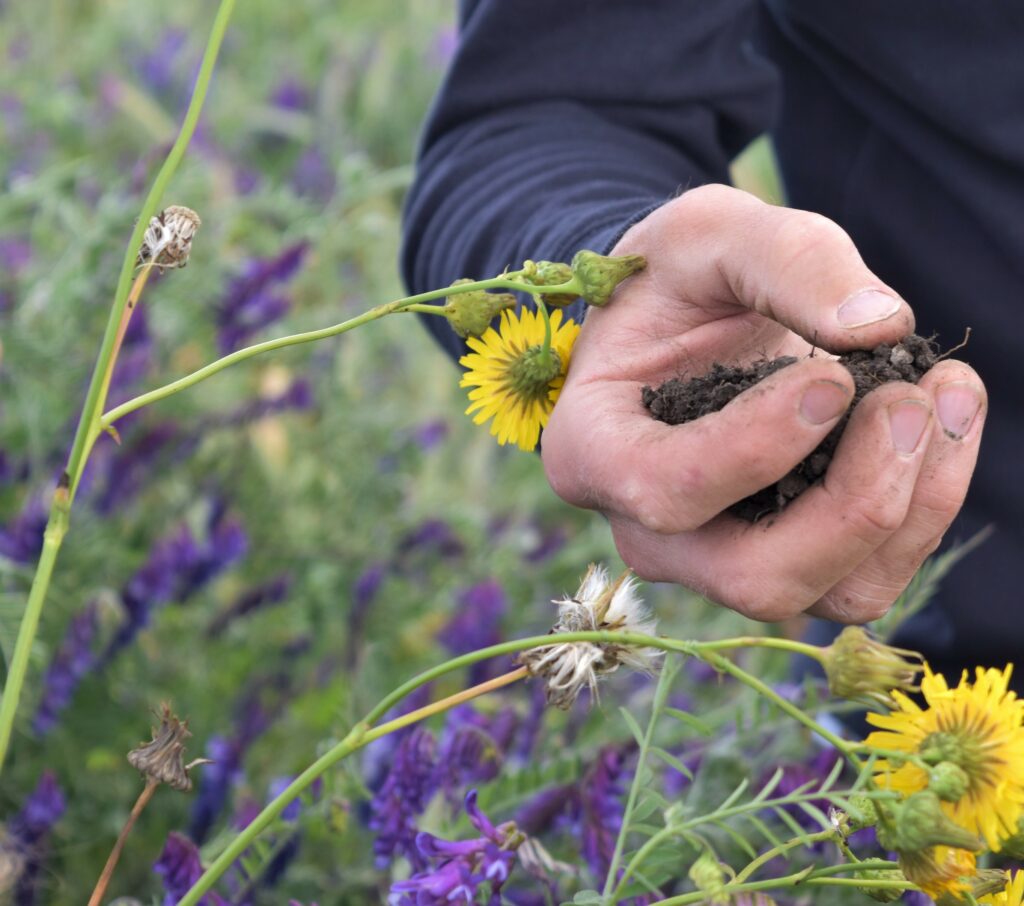

We help agricultural producers and rural communities discover the benefits of climate solutions—solutions that go beyond reducing emissions to improving soil health, creating new economic opportunities, protecting biodiversity and strengthening resilience against droughts and floods.
We take a made-in-Alberta, rural-first approach, making climate conversations accessible, practical and relevant.
Through learning resources, social innovation labs, producer-led projects and partnerships, we’re working with Albertans to embrace practices that are good for the farm and the climate.

Since 2017, we have been working alongside farmers, ranchers and rural communities to advance climate solutions in Alberta. Our impact so far:
The Regenerative Agriculture Lab (RAL) brings together farmers, researchers, food retailers, and other agri-food stakeholders to collaborate, test, and develop ideas that accelerate the adoption of regenerative agriculture in Alberta.
Using social innovation methodology, RAL creates a space for exploring initiatives, policies, and programs that support a resilient and sustainable future for agriculture.
The Siksikaitsitapi Agriculture Project (SAP) empowers members of the Blackfoot Confederacy by providing a platform for them to explore and identify which climate solutions that align with Blackfoot ways of knowing.
Using a culture-specific model of engagement, activities within SAP are delivered with the appropriate cultural lens, to further a Nation-to-Nation relationship and to honour the spirit and intent of Truth and Reconciliation.

Farms that work with nature, not against it, are paving the way for healthier soil, cleaner water, and a balanced climate. Regenerative agriculture doesn’t just restore the land—it restores our connection to it.

Glen and Kelly Hall have been managing Timber Ridge Ranch, a 480-acre farmland situated an hour south of Calgary near Stavely, Alberta, for over 40 years. Their approach to agriculture involves regenerative practices and the conversion of their land back to perennial coverage, including the cultivation of multi or polyculture crops for swath grazing.
Imagine a future where the land and waters are as strong and resilient as the Siksikaitsitapi. Now, imagine your voice helping to make that future a reality.
If you’re a member of the Blackfoot Confederacy, we’d love for you to join us for our upcoming Talking Circle — a chance to speak your truth and help guide solutions that reflect our connection to the land and our responsibility to future generations. Your voice, your stories and your knowledge can help create a path forward that honors both tradition and resilience.
We’ll provide the food; you provide the spirit and the wisdom.